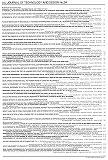Volume 22, Issue 51
Displaying 51-78 of 78 articles from this issue
Architectural Planning and Design
-
2016 Volume 22 Issue 51 Pages 683-688
Published: 2016
Released on J-STAGE: June 20, 2016
Download PDF (2982K) -
2016 Volume 22 Issue 51 Pages 689-694
Published: 2016
Released on J-STAGE: June 20, 2016
Download PDF (1442K) -
THE STATE AND CHANGE OVER THE YEAR OF THE RESIDENTS’ RESOURCES FOR SHOPPING IN SEMI-MOUNTAINOUS AREA2016 Volume 22 Issue 51 Pages 695-700
Published: 2016
Released on J-STAGE: June 20, 2016
Download PDF (700K) -
2016 Volume 22 Issue 51 Pages 701-706
Published: 2016
Released on J-STAGE: June 20, 2016
Download PDF (2120K) -
2016 Volume 22 Issue 51 Pages 707-710
Published: 2016
Released on J-STAGE: June 20, 2016
Download PDF (2715K) -
2016 Volume 22 Issue 51 Pages 711-716
Published: 2016
Released on J-STAGE: June 20, 2016
Download PDF (2658K)
Rural Planning
-
2016 Volume 22 Issue 51 Pages 717-720
Published: 2016
Released on J-STAGE: June 20, 2016
Download PDF (621K)
Urban Planning
-
A STUDY ABOUT THE RECONSIDERATION CONTENTS OF URBAN MASTER PLAN OF HA NOI CITY BEHIND DOI MOI POLICY2016 Volume 22 Issue 51 Pages 721-726
Published: 2016
Released on J-STAGE: June 20, 2016
Download PDF (3078K) -
2016 Volume 22 Issue 51 Pages 727-731
Published: 2016
Released on J-STAGE: June 20, 2016
Download PDF (645K) -
2016 Volume 22 Issue 51 Pages 733-738
Published: 2016
Released on J-STAGE: June 20, 2016
Download PDF (1931K) -
2016 Volume 22 Issue 51 Pages 739-742
Published: 2016
Released on J-STAGE: June 20, 2016
Download PDF (1149K) -
2016 Volume 22 Issue 51 Pages 743-748
Published: 2016
Released on J-STAGE: June 20, 2016
Download PDF (2748K) -
2016 Volume 22 Issue 51 Pages 749-754
Published: 2016
Released on J-STAGE: June 20, 2016
Download PDF (1934K) -
2016 Volume 22 Issue 51 Pages 755-760
Published: 2016
Released on J-STAGE: June 20, 2016
Download PDF (1203K) -
A STUDY ON ‘LODE’ AS CITIZEN LEARNING METHOD FROM THE PERSPECTIVE OF DISASTER PREVENTION AND WELFARE2016 Volume 22 Issue 51 Pages 761-766
Published: 2016
Released on J-STAGE: June 20, 2016
Download PDF (797K)
History and Theory of Architecture
-
2016 Volume 22 Issue 51 Pages 767-770
Published: 2016
Released on J-STAGE: June 20, 2016
Download PDF (1342K) -
2016 Volume 22 Issue 51 Pages 771-776
Published: 2016
Released on J-STAGE: June 20, 2016
Download PDF (2012K) -
2016 Volume 22 Issue 51 Pages 777-782
Published: 2016
Released on J-STAGE: June 20, 2016
Download PDF (2028K) -
THE STUDY ON HISTORIC DRAWINGS ABOUT GIONKAKU DESIGNED BY CHUTA ITO OF TAISEI CORPORATION POSSESSION2016 Volume 22 Issue 51 Pages 783-788
Published: 2016
Released on J-STAGE: June 20, 2016
Download PDF (2988K) -
2016 Volume 22 Issue 51 Pages 789-793
Published: 2016
Released on J-STAGE: June 20, 2016
Download PDF (789K) -
2016 Volume 22 Issue 51 Pages 795-800
Published: 2016
Released on J-STAGE: June 20, 2016
Download PDF (1237K) -
2016 Volume 22 Issue 51 Pages 801-806
Published: 2016
Released on J-STAGE: June 20, 2016
Download PDF (2478K) -
2016 Volume 22 Issue 51 Pages 807-812
Published: 2016
Released on J-STAGE: June 20, 2016
Download PDF (4169K)
Information Systems Technology
-
2016 Volume 22 Issue 51 Pages 813-816
Published: 2016
Released on J-STAGE: June 20, 2016
Download PDF (810K)
Education
-
2016 Volume 22 Issue 51 Pages 817-820
Published: 2016
Released on J-STAGE: June 20, 2016
Download PDF (594K)
Disaster
-
2016 Volume 22 Issue 51 Pages 821-824
Published: 2016
Released on J-STAGE: June 20, 2016
Download PDF (874K) -
2016 Volume 22 Issue 51 Pages 825-830
Published: 2016
Released on J-STAGE: June 20, 2016
Download PDF (1142K)
Reviews
-
2016 Volume 22 Issue 51 Pages 833-845
Published: 2016
Released on J-STAGE: June 20, 2016
Download PDF (891K)
